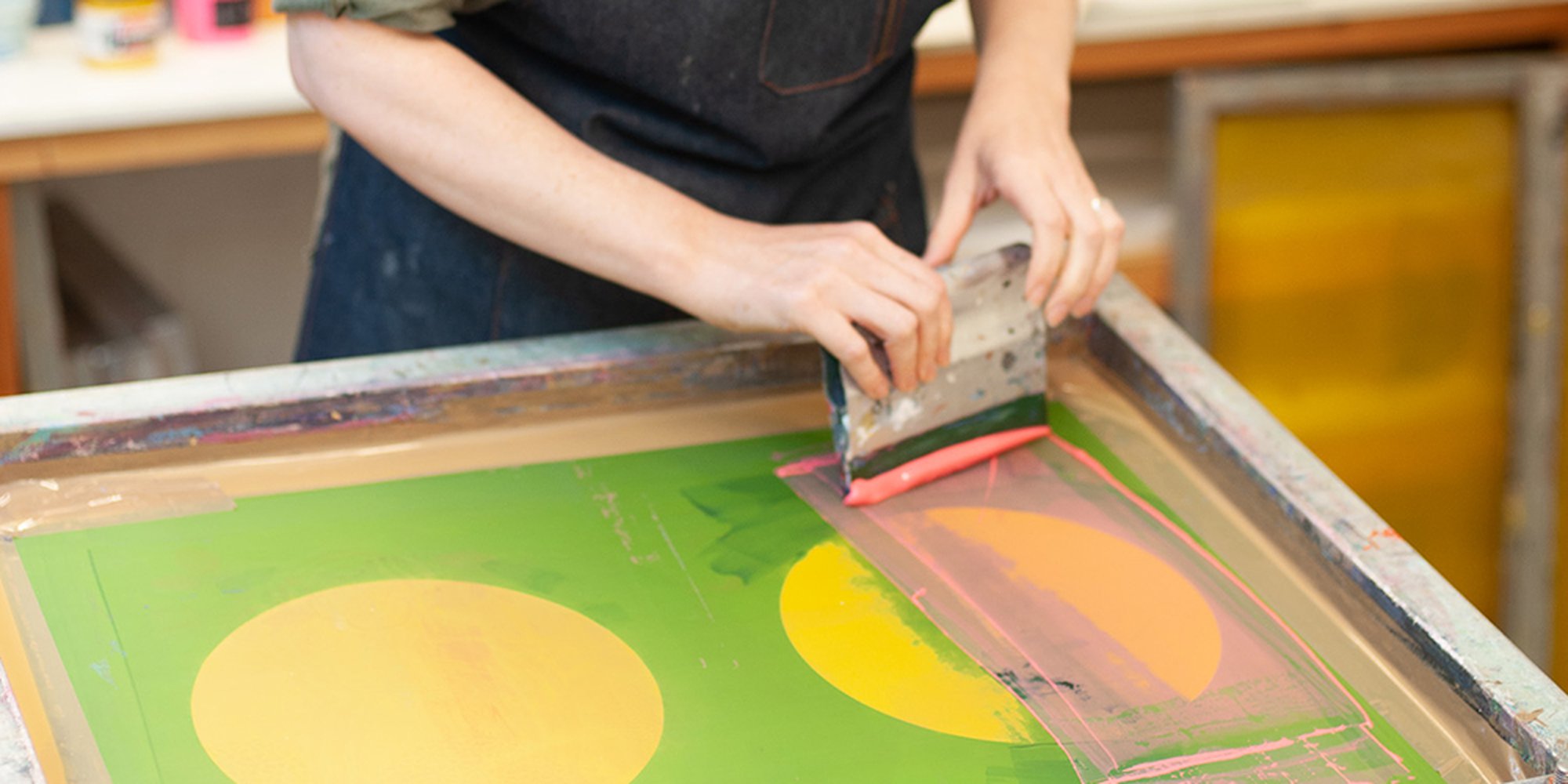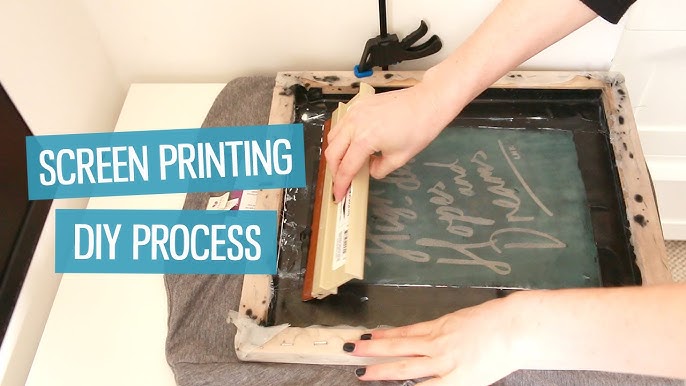ChatGPT said: 10:9 Design reviews: uncovering the strengths and weaknesses
Discover the Different Kinds Of Screen Printing Techniques for Your Next Task
Screen printing uses a varied variety of strategies that can improve any kind of creative task. From standard techniques like serigraphy to modern advancements such as direct-to-garment printing, each strategy has its unique benefits. Specialty choices, consisting of environmentally friendly and metallic inks, present much more opportunities. Comprehending these methods can substantially impact the final end result. However, the obstacle lies in choosing one of the most suitable method for specific demands and preferred impacts. What aspects should one consider?

The Fundamentals of Screen Printing
Although screen printing might appear complicated, it is essentially an uncomplicated process that includes transferring ink through a mesh screen onto various surface areas. The technique begins with the development of a pattern, which specifies the design to be published. This pattern is affixed to a mesh screen, usually constructed from polyester or nylon. Once the pattern is in location, ink is applied to the screen and pushed via the mesh making use of a squeegee, leading to the desired pattern being printed on the underlying product.
Screen printing can be performed on a vast array of substratums, including plastic, fabric, and paper, making it a versatile option for numerous tasks. The procedure allows for complex layouts and vivid colors, making it popular in industries such as art, style, and marketing. Comprehending these basics equips individuals with the foundational knowledge needed to discover even more sophisticated techniques in screen printing.
Standard Screen Printing Techniques
Conventional screen printing methods have actually been used for centuries, preserving the craftsmanship and creativity of this technique. This strategy makes use of a mesh screen to move ink onto a substratum, such as textile or paper, enabling durable and vivid layouts. The process begins with creating a stencil, which blocks particular locations of the screen to manage where the ink will be applied.
One prominent technique is serigraphy, often made use of for artistic prints and restricted versions. An additional is using water-based inks, which are environment-friendly and provide a soft feel on textiles - 10:9 Design Embroidery. Additionally, standard methods can consist of manual printing, where craftsmens apply ink with a squeegee, making certain accuracy and interest to information
These techniques continue to be valued in the market for their tactile top quality and the special textures they generate, interesting both makers and consumers who value the heritage of screen printing.
Digital Screen Printing Innovations
As the demand for faster manufacturing and modification in the printing market has actually surged, electronic screen printing developments have arised as a game-changer. This modern technology blends standard screen printing methods with electronic processes, permitting rapid prototyping and complex layouts that were formerly difficult to accomplish. One substantial improvement is the introduction of direct-to-garment (DTG) printing, which helps with top notch, full-color prints on various textiles without the requirement for displays. Furthermore, developments in ink formulas have brought about environmentally friendly choices that preserve vivid shades while decreasing environmental impact. Using automated systems additionally enhances manufacturing, reducing labor expenses and enhancing accuracy. These developments not only deal with little batch orders and customized designs but additionally enable quicker turn-around times, making them perfect for companies concentrated on meeting client needs in a fast-paced market. Digital screen printing, as a result, represents a vital development in the domain of printing strategies.
Specialized Screen Printing Methods
Checking out specialized screen printing techniques discloses a diverse range of strategies that press the borders of imagination and functionality in the printing industry. Among these, glow-in-the-dark inks offer an one-of-a-kind aesthetic effect, making layouts come active in low-light conditions. Metal inks, understood for their shimmering coating, add a touch of high-end to published materials. One more innovative method is discharge printing, which gets rid of color from the material as opposed to adding ink, resulting in a soft, classic feeling. High-density printing produces an elevated texture externally, enhancing responsive interaction. In addition, water-based inks are acquiring appeal for their vivid colors and reduced ecological influence. Each of these specialty techniques caters to certain layout needs, allowing brand names and musicians to create standout products that reverberate with their audiences. By leveraging these techniques, companies can boost their screen printing jobs to brand-new elevations, ensuring unforgettable impacts.
Eco-Friendly Screen Printing Options
Environmentally friendly screen printing choices are obtaining traction as the sector changes in the direction of sustainability. Lasting ink options and making use of eco-friendly products are key elements in decreasing the ecological effect of the printing procedure. By embracing these methods, screen printers can add to an extra sustainable future while maintaining top quality outcomes.
Lasting Ink Choices

Biodegradable Products Use
As the screen printing industry develops, the unification of biodegradable products is coming to be progressively important for environmentally mindful methods. Designers and manufacturers are currently checking out inks and substratums made from all-natural, eco-friendly resources that break down a lot more effectively than conventional counterparts. These naturally degradable alternatives reduce plastic waste and minimize ecological influence, straightening with the expanding need for lasting items.
Usual instances consist of water-based inks and organic cotton materials, both of which decrease hazardous chemicals and promote eco-friendliness. Brands that embrace these products usually boost their market allure, bring in customers who prioritize sustainability. As awareness of ecological problems remains to climb, the change towards biodegradable materials in screen printing is most likely to acquire energy, fostering a greener industry criterion.
Choosing the Right Method for Your Project
Just how can one establish one of the most ideal screen printing strategy for a details task? The choice depends upon a number of aspects, consisting of the material to be printed on, the complexity of the design, and the wanted manufacturing quantity - 10:9 Design Embroidery. For instance, direct-to-garment printing is ideal for detailed styles with countless shades, while standard screen printing succeeds for bigger runs of simpler graphics
In addition, consideration of the end-use of the published item is essential. For outside applications, techniques that offer longevity and weather condition resistance, such as plastisol ink, might be liked. Conversely, environmentally-conscious tasks may gain from water-based inks or biodegradable products.
Inevitably, comprehending the project's distinct demands permits an educated option, guaranteeing both aesthetic charm and useful long life. By reviewing design complexity, product compatibility, and production range, one can successfully choose the most suitable screen printing technique to fulfill their project's objectives.
Frequently Asked Concerns
What Is the Background of Screen Printing?
Screen printing came from in old China around 1000 AD, progressing through Japan and Europe. By the 20th century, it came to be preferred in industrial art and fashion, transforming just how layouts were produced and distributed internationally.

Just how Do I Prepare Artwork for Screen Printing?
To prepare artwork for screen printing, one must guarantee high resolution, make use of a suitable color mode, develop separate layers for each shade, and convert message to details, guaranteeing compatibility with the printing process and desired result.
What Materials Are Ideal for Screen Printing?
The most effective materials for screen printing consist of premium inks, durable displays, and suitable substratums like cotton, polyester, or blends. Furthermore, making use of proper emulsion and mops can enhance the printing procedure and outcomes.
Can I Screen Publish at Home?
Yes, screen printing in your home is feasible. With the right materials, arrangement, and methods, people can produce high-quality prints. Mindful consideration of work area and equipment is necessary for effective results.
What Are Typical Mistakes in Screen Printing?
Usual errors in screen printing include improper direct exposure times, poor ink consistency, imbalance of displays, insufficient cleaning of products, and disregarding to examine prints. These mistakes can jeopardize the high quality and accuracy of the final item.
Screen printing may appear complicated, it is basically an uncomplicated process that entails transferring ink through a mesh screen onto various surfaces. As the need for faster manufacturing and modification in the printing market has actually surged, electronic screen printing innovations have arised as a game-changer. Checking out specialty screen printing techniques reveals a diverse range of methods that push the limits of imagination and performance in the printing sector. The finest products for screen printing include high-grade inks, long lasting screens, and appropriate substrates like cotton, polyester, or blends (10:9 Design Screen Printing). Usual errors in screen printing include improper direct exposure times, insufficient ink consistency, misalignment of screens, inadequate cleaning of products, and ignoring to check prints